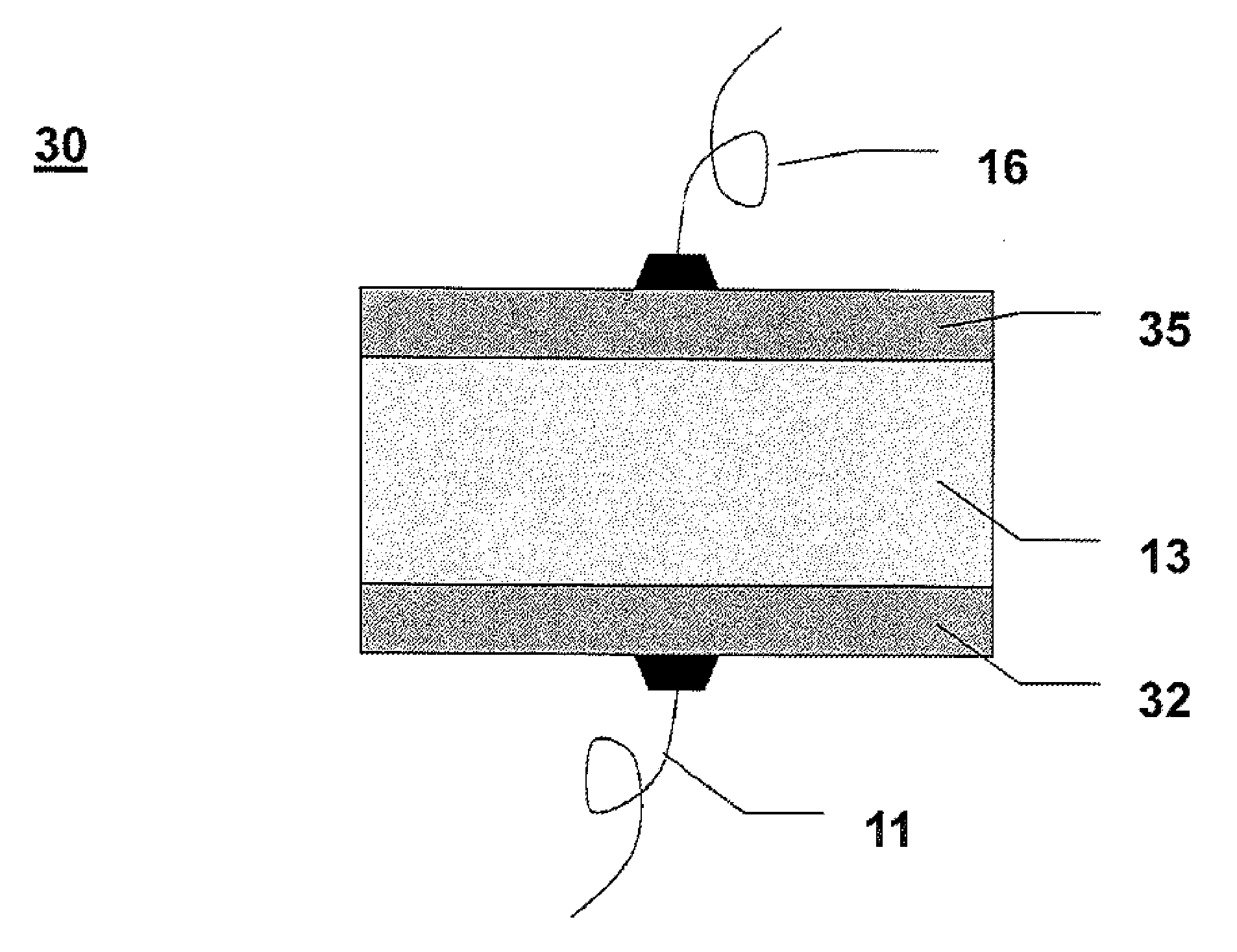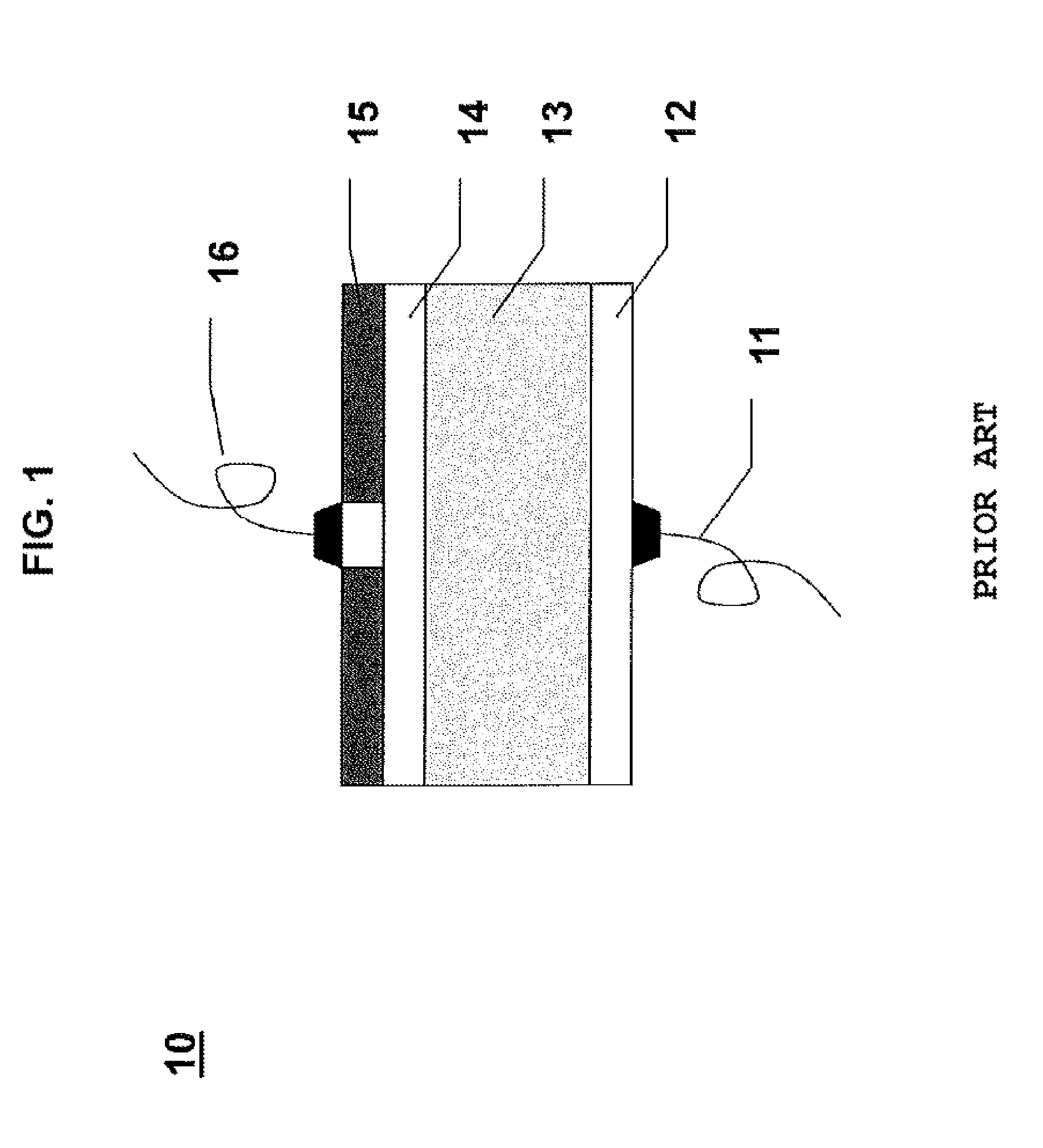Temperature compensating electrodes
- Summary
- Abstract
- Description
- Claims
- Application Information
AI Technical Summary
Benefits of technology
Problems solved by technology
Method used
Image
Examples
Embodiment Construction
[0019]This invention reduces the temperature sensitivity of BAW resonators without some of the drawbacks of temperature compensation techniques that are present in prior art resonators.
[0020]In prior art BAW resonators, the reduction in temperature sensitivity has been achieved through active and / or passive means. Active means include circuit elements that adjust the resonator frequency response by switching inductances and / or capacitances into and out of circuit. All such schemes require power to operate. These schemes can also be lossy, and the nonlinearity of the switch can cause errors.
[0021]Passive means include incorporating materials into the resonator that have temperature coefficients that are positive, to cancel the negative temperature coefficients of most commonly used resonator materials. In AlN-based BAW resonators, SiO2 heretofore has been widely used as the temperature compensating material in the resonator stack. This is because its temperature coefficient of stiffn...
PUM
 Login to View More
Login to View More Abstract
Description
Claims
Application Information
 Login to View More
Login to View More - R&D
- Intellectual Property
- Life Sciences
- Materials
- Tech Scout
- Unparalleled Data Quality
- Higher Quality Content
- 60% Fewer Hallucinations
Browse by: Latest US Patents, China's latest patents, Technical Efficacy Thesaurus, Application Domain, Technology Topic, Popular Technical Reports.
© 2025 PatSnap. All rights reserved.Legal|Privacy policy|Modern Slavery Act Transparency Statement|Sitemap|About US| Contact US: help@patsnap.com



